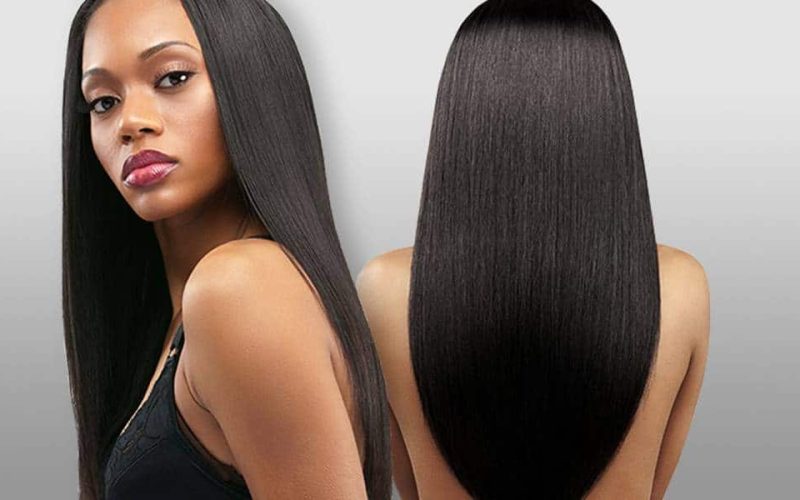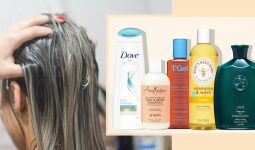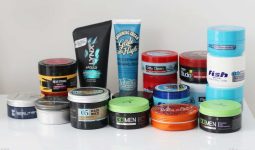Ladies have worn weaves and hair extensions for centuries to achieve a sultry, feminine image.
In the past, celebrities were the only ones who could afford them. But today, women from all over the world wear them.
As we age, hair loss is a common occurrence. Many people don’t want surgery to restore their hair’s volume.
So, we opt-in for any hair weave. Christina Jenkins, a Black hairdresser, invented hair weaves.
Rather than using heat or chemicals, she desired a novel method of coping with hair loss. Hair weaving is a non-surgical method of gaining more hair.
Read on as we discuss the different types of hair weaves that exist.
1. Lace Front Weave
Lace frontal weave is for individuals who desire a more natural appearance and to keep virgin hair. In the front, you can divide it in one or two ways.
It features a hairpiece that resembles the scalp. Traditional sew-in weaves are similar, but there are a few slight changes.
They made this type of hair weave entirely from human hair, which they sew into its crown. Also, there is a lace closure aligned with the hairline.
However, you must manage this human hair extension properly to ensure it remains neat for around three months until the natural hair grows longer.
A lace wig is beautiful, too, but a lace front weave is less expensive than a lace front wig and has the same natural look.
Note that hair falls out when your stylist doesn’t bond these weaves properly, especially around the nape of the neck. So, be sure you trust your stylist.
2. Sew-in Weave
A sew-in weave is among the different types of hair weaves and is the easiest to maintain.
Girls who love this weave must go to the salon because it is time-consuming and requires skill.
It is one of the most popular weaves because it is simple to maintain and low-maintenance. Women can wear this weave with both natural and synthetic hair.
The hairdresser sews the hair into the braids after braiding tiny braids closely against the head. It should endure for at least six to eight weeks.
Maintaining it after that is not recommended because it may cause significant harm to the hair and scalp.
Further, it is essential to know that washing the hair too frequently can cause the weave to fall out.
3. Glue-in Weave
Glue-in weave is another type of hair weave. It links the extensions to your hair using a particular glue.
The stylist applies the adhesive to the hair wefts, subsequently bonded to the natural or protective hair cap.
Glue-in weaves are pretty popular among those who wish to do their weave at home since, with a bit of skill and the correct tools, you can quickly improve the appearance of your hair with this weave.
The most crucial thing to consider while employing this procedure is the quality of the glue. Because the adhesive may contain strong chemicals, it can hurt your scalp and cause irritations.
If you glue in your weaves, ensure you understand how to separate the hair and use glue correctly.
4. Fusion Weave
Fusion weave is a beautiful style and type of hair weave that women can’t overlook. It is suitable for curly hair and straight hair.
This is a relatively permanent type of hair extension, with results lasting between three and six months.
It entails fusing the extensions to the natural hair and necessitates a very experienced hairdresser.
Also, it involves the use of two methods: heat and cold. A stylist will attach each extension separately, and it is critical to be adept at this method to achieve a tidy result.
Cold fusion weaves fuse human hair to the ends of your strands using an ultrasonic instrument and a keratin-based polymer.
This is the most recent advancement in the fusion weaving technique, and it is gentler on your hair and scalp than the other ways.
Using hot fusion procedures, the weaves can last for up to six months. However, this method is unsuitable for thin hair because the weight of the glue and weave may weaken the natural hair and cause breaking.
5. Interlocking Weave
The only difference between the interlocking weave and the sew-in weave is that the interlocking weave doesn’t need cornrows or mini-braids.
Approaching a stylist for interlocking weaves is always brilliant, but you could do it yourself at home.
When you choose an interlocking weave, you will have a micro-thin weft meticulously sewn onto loose hair rather than braiding cornrows close to the head.
This will allow you to sew the weave into the braid. This thin weft is nearly indistinguishable from natural hair, allowing you to maintain a natural appearance without worrying about people noticing you’re wearing a weave.
When you have this type of hair weave, it’s almost impossible for people to tell if you have a weave or not.
You can run your fingers through your hair without fear of snagging and ripping them out on the weft.
6. Drawstring Weave
A drawstring weave is the last on our list of the different types of hair weaves, but this doesn’t make it any less good.
This type of weave typically comprises synthetic hair extensions and is held in place by hair combs and elastic drawstrings.
Unlike other types of weaves that require attaching the hair to your existing hair, drawstrings are great if you wear your hair up in a ponytail.
This is an excellent alternative if you care about harming your hair after using weaves. Because this is a temporary attachment and they do not employ dangerous materials or methods to secure the extensions, the damage is far less than the other weaves.
While each manufacturer’s instructions for using this type of weave may differ slightly, they fix it on the hair similarly.
Conclusion
Though there are different types of hair, we have just discussed the techniques for fixing these human hair weaves.
However, it is necessary to keep all the safety measures in mind to avoid hair loss or breakage.
Also, before making any changes, you should understand your hair type and texture and the best weave for it. Happy styling!








